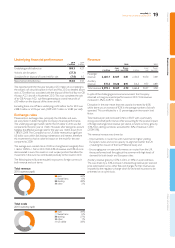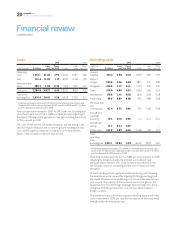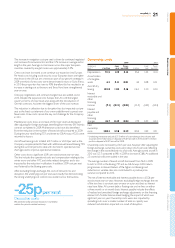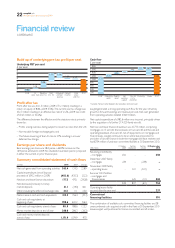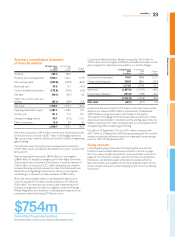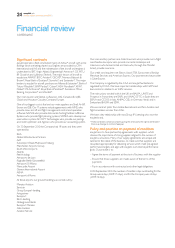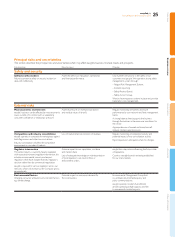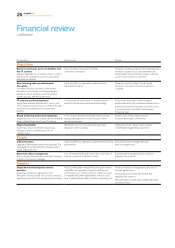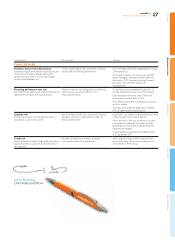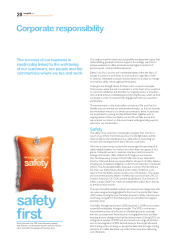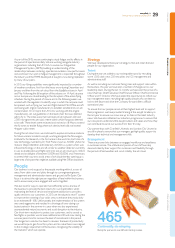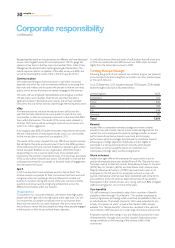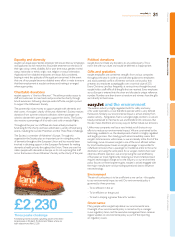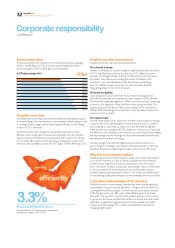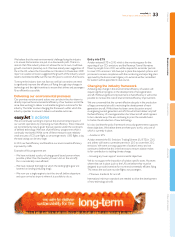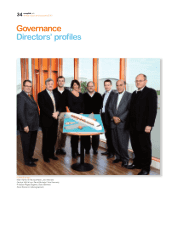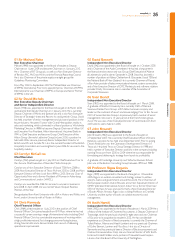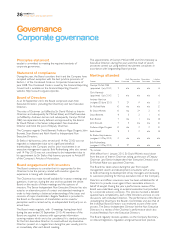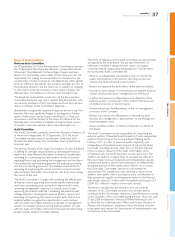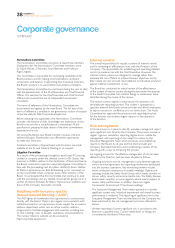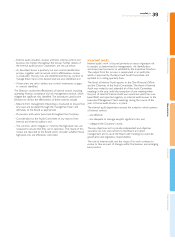EasyJet 2010 Annual Report Download - page 31
Download and view the complete annual report
Please find page 31 of the 2010 EasyJet annual report below. You can navigate through the pages in the report by either clicking on the pages listed below, or by using the keyword search tool below to find specific information within the annual report.
As part of the SMS, we are continuing to study fatigue and its effects in
the pursuit of operational safety. We are working alongside industry
organisations, including the UK CAA, to evolve our Fatigue Risk
Management System (FRMS), building an understanding of the
relationships between rostering, operational variables, crew performance
and workload. Our work in fatigue management is respected throughout
the industry and the FRMS developed at easyJet is now being replicated
by many of our peers.
In 2010, our ying capabilities were signicantly impacted by a number
ofweather conditions, rst from the heavy snow during December and
January and then from the ash cloud from the Eyjafjalla volcano in April
and May. Following the full eruption of the volcano on 14 April, airspace
across Europe was closed leading to the disruption of the entire ying
schedule. During the period of closure and in the following weeks, we
worked with the regulators to identify ways in which the airspace could
be opened, such as ying our own test ights behind Met Ofce aircraft
and liaising with engine manufacturers to establish sensible limits on ash
contamination. On23April, the UK CAA, working with the engine
manufacturers, set out guidelines on the level of ash that was deemed
safe to y in. The initial assessment set levels of ash between 200 and
2,000 microgrammes per cubic metre within which ying was deemed
to be safe. These levels were reviewed and revised on 18 May to extend
the y zones to enable ying where ash density levels did not exceed
4mg per cubic metre.
During the ash cloud crisis, we continued to explore innovative solutions
for future volcanic incidents. easyJet, working alongside the Norwegian
Institute for Air Research, is the rst airline in the world to start trials of a
new technology, invented by Dr Fred Prata, known as AVOID (Airborne
Volcanic Object Identier and Detector). AVOID is a system which uses
infrared technology on the aircraft, similar to weather detectors currently
in use, to enable pilots and ight control to see an ash cloud up to 100km
ahead and at altitudes of between 5,000ft and 50,000ft, and, if necessary,
to amend their course to avoid areas of ash cloud thereby opening up a
larger area of airspace than might be available using Met Ofce data alone.
People
Our business is only as good as the people working within it, across all
areas, from cabin crew and pilots through to our engineering teams,
management and administration teams and ground staff in Spain. Our
focus is to attract the right person regardless of level within the business,
and to ensure everyone is engaged and works together.
We also look for ways to operate more efciently across all areas of
the business to provide the best returns for our shareholders whilst
maintaining the level of service and employee satisfaction to provide a
quality service to our customers. In 2010, we introduced a new IT system
to improve the rostering of our cabin crew, to enhance the productivity
by an estimated 8–10%. Unfortunately, the implementation of this system
was overly aggressive and resulted in a shortage of crew during our
busiest period in the summer in a year when we also experienced
unprecedented natural, economic and social disruption to the industry.
Our short-term resolution to protect our customers, and to cancel as
few ights as possible, was to lease additional aircraft and crew during the
summer period and to increase the level of recruitment in this period.
Our longer term solution has been to reassess the levels of productivity
we would hope to gain from this system and to make these more aligned
to the strategic requirement of the business recognising the volatility of
the market in which we operate.
Strategy
We have developed a three-part strategy to nd and retain the best
people for our organisation.
Talent
During the year we added to our existing talent pool by recruiting
some 1,300 cabin crew, 250 new pilots and 125 management and
administrative staff.
As well as recruiting our customer facing roles and support roles within
the business, this year we have seen a number of changes across our
leadership team. During the last 12 months we have seen the arrival of a
new Chairman, Chief Executive, Chief Financial Ofcer, Chief Commercial
Ofcer and IT Director. We have seized the opportunity to refresh our
top management team, recruiting high quality people who are keen to
look to the future and drive the Company forward after adifcult
operational year.
To ensure that our people remain at their highest level and to support
their progression, we have provided training at the easyJet Academy in
the last year to ensure our crews are up to date on the latest industry
news. We have also refreshed our induction programme, to ensure that
our new joiners understand the easyJet culture and values and how they
can contribute towards our success from their rst day.
Our partnerships with Craneld University and London City University
are still in place to ensure that our managers get high quality support to
develop their technical and management skills.
Engagement
There are proven links between an engaged workforce and excellence
incustomer service. The attitude and passion of our staff was ably
demonstrated by their support for customers and exibility through
theperiods of bad weather and, most notably, the ash cloud.
465
Continually developing
During the year we ran over 465 pilot training courses.
Overview Business review Governance Accounts Other information
29
easyJet plc
Annual report and accounts 2010


